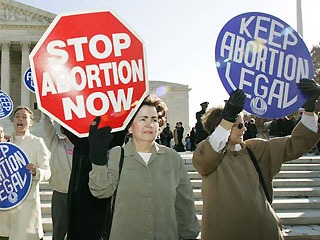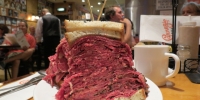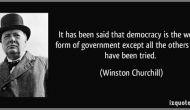Our resident political historian examines the factors surrounding the abortion issue in the United States. Please note that Shea Magazine expresses no opinion either for or against the practice of abortion. TS
 The American debate on abortion will not be decided by legal rights or moral wrongs. These kinds of arguments, strident though they may be, have varied at different points in American history. Answers to “the abortion question” in our country have always been influenced by a less audible background chorus of influences: shifting economic, psychological, and political considerations.
The American debate on abortion will not be decided by legal rights or moral wrongs. These kinds of arguments, strident though they may be, have varied at different points in American history. Answers to “the abortion question” in our country have always been influenced by a less audible background chorus of influences: shifting economic, psychological, and political considerations.
Until the mid-nineteenth century, abortion was legal, at first in the colonies, and later, in the states, a choice supported by the general population, politicians, and most churches. Colonial Americans, including seventeenth century Puritans, made little distinction between spontaneous and induced abortions before quickening, defined as the moment when the mother first felt the fetus move, the only sure way to tell if a woman was pregnant. According to an article by James Mohr in Women’s America: Refocusing the Past, after quickening, usually at the midpoint of gestation, “the expulsion and destruction of a fetus without due cause was considered a crime because the fetus itself had manifested some semblance of a separate existence: the ability to move.”
Abortions, performed primarily by midwives, took place covertly not because the termination of pregnancy itself was deemed blameworthy but because it was seen as an extreme action designed to hide a prior sin—sex outside of marriage. Strikingly absent from public opinion was outrage over the destruction of the fetus or denunciations of those who would arrest nature’s course. Adultery, on the other hand, was cause for damnation.
Beginning in the 1820s, state laws made abortion illegal, a process complete by the closing decades of the century. Doctors supported the bans on the grounds that abortions were immoral and dangerous. Less touted was their interest in preserving their exclusive rights to practice medicine, a monopoly that was being increasingly challenged by midwives and homeopaths.
Anti-abortion sentiment also came from the growing fear that higher birthrates of newly arrived immigrant women threatened to overwhelm the Anglo-Saxon population. And yet, almost in defiance of the prohibition, between 1840 and 1880 the number of abortions among married, native-born Protestant wives of middle- and upper-class standing markedly increased. These women turned to abortion—usually with the agreement of the spouse—to postpone family responsibilities. They could afford to pay midwives and doctors willing to perform the now illegal procedure.
Criminalization of abortion and of information about it did not reduce the number of women who sought to end an unwanted pregnancy; it just denied them access to the services readily available to their colonial sisters. On the eve of the Civil War, around 160,000 abortions were undertaken among a population of 30 million (James Mohr, Abortion in America, 1978; Martin Olasky, Abortion Rites, 1995); higher proportionately than the number of abortions performed today, which has leveled off at 1.2 million per year out of a population of 307 million.
The majority of nineteenth century abortions involved poor women. Many of them were self-induced or performed by back alley practitioners operating under unsafe and unsanitary conditions. Mortality rates were high. Techniques included the use of knives, knitting needles, and sticks, untested drugs, herbs, and chemicals, and horseback riding. It was also believed abortion could be induced by jumping high enough so that one’s heels touched one’s buttocks. Moral and legal considerations – and even the possibility of death — were of minor importance to those in desperate circumstances undertaking desperate measures.
Pages: 1 2


![Let's Go to Chinatown, Shall We? [PHOTOS]](https://sheamagazine.com/wp-content/plugins/special-recent-posts-pro/cache/MjAwMTAwbm9jaGluYXRvd24tMi1idy0=.jpg)
![Scenes from Washington Square Park - NYC [PHOTOS]](https://sheamagazine.com/wp-content/plugins/special-recent-posts-pro/cache/MjAwMTAwbm9JTUdfNDA1Mg==.jpg)

![Sunset - Pelham Shore Park - Long Island Sound [PHOTOS]](https://sheamagazine.com/wp-content/plugins/special-recent-posts-pro/cache/MjAwMTAwbm9JTUdfMzM3MC1SRVNJWkU=.jpg)





![Let's Go to the Empire State Building - Shall We? [PHOTOS]](https://sheamagazine.com/wp-content/plugins/special-recent-posts-pro/cache/MjAwMTAwbm9JTUdfMzkxNjE=.jpg)






